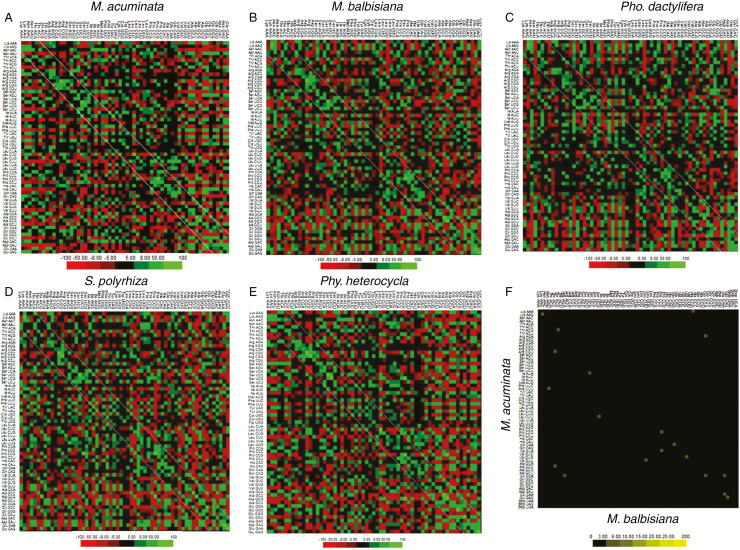Fig. 7.
Codon-pair context patterns for (A) M. acuminata, (B) M. balbisiana, (C) Pho. dactylifera, (D) S. polyrhiza and (E) Phy. heterocycla. Green represents preferred codon-pair contexts and red represents rejected codon-pair contexts. Values that are not statistically significant are represented in black. The regions between the two parallel diagonal lines represent the codon-pair contexts that are more frequently used compared to other contexts in the species under study. (F) Differential display map for comparative analysis of codon-pair context between M. acuminata and M. balbisiana. A colour scale based on gradation of yellow was used for the differential display. Common features are indicated in black and the differences are represented in yellow.

